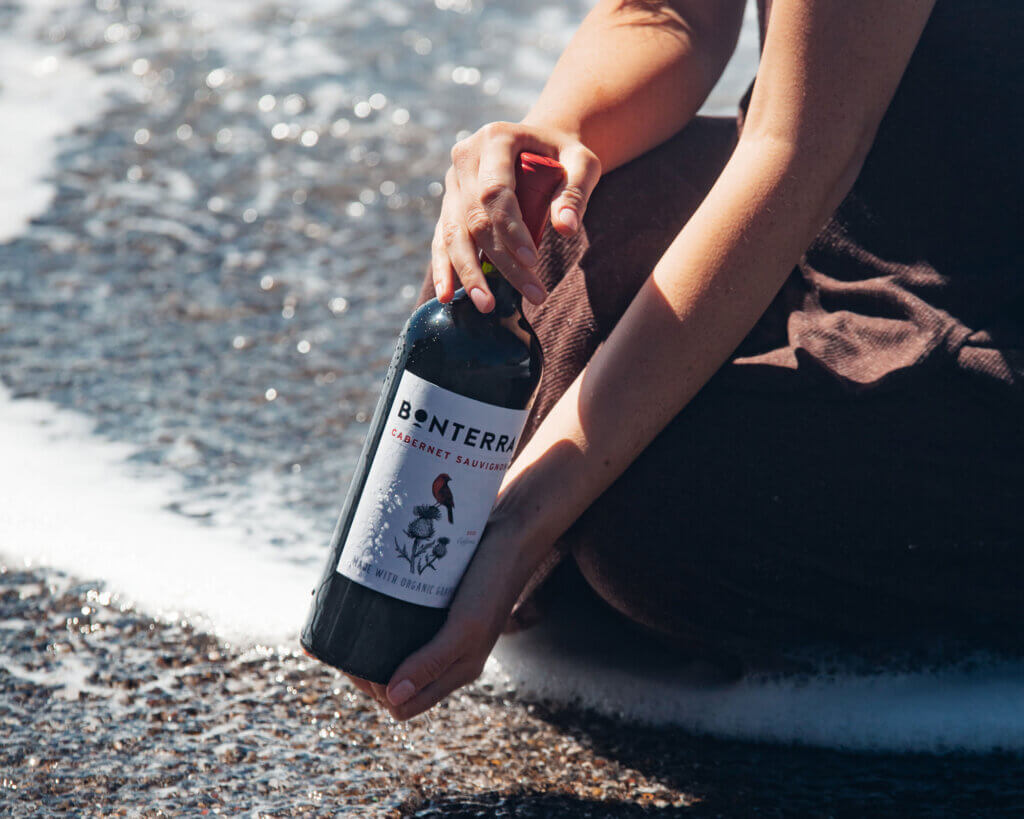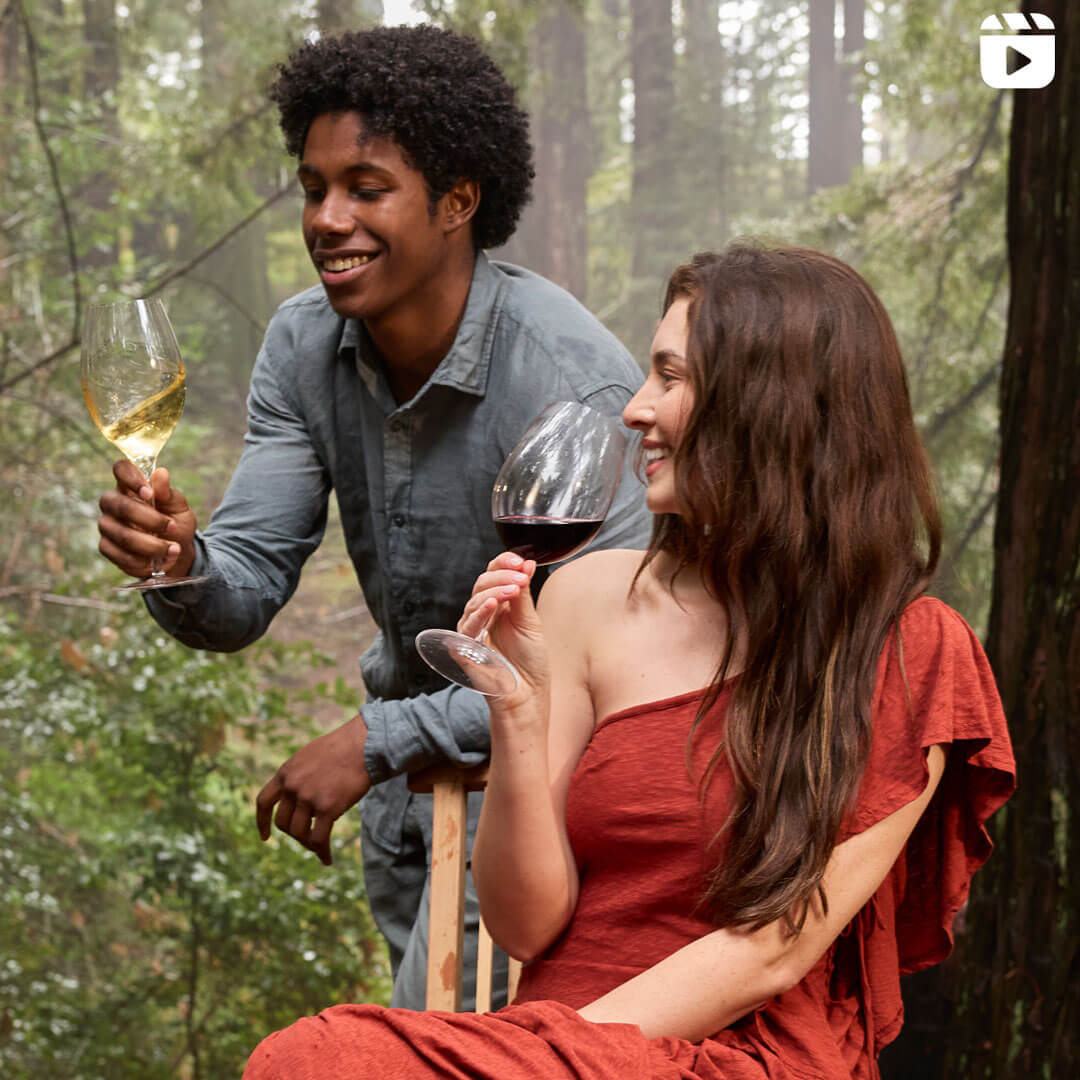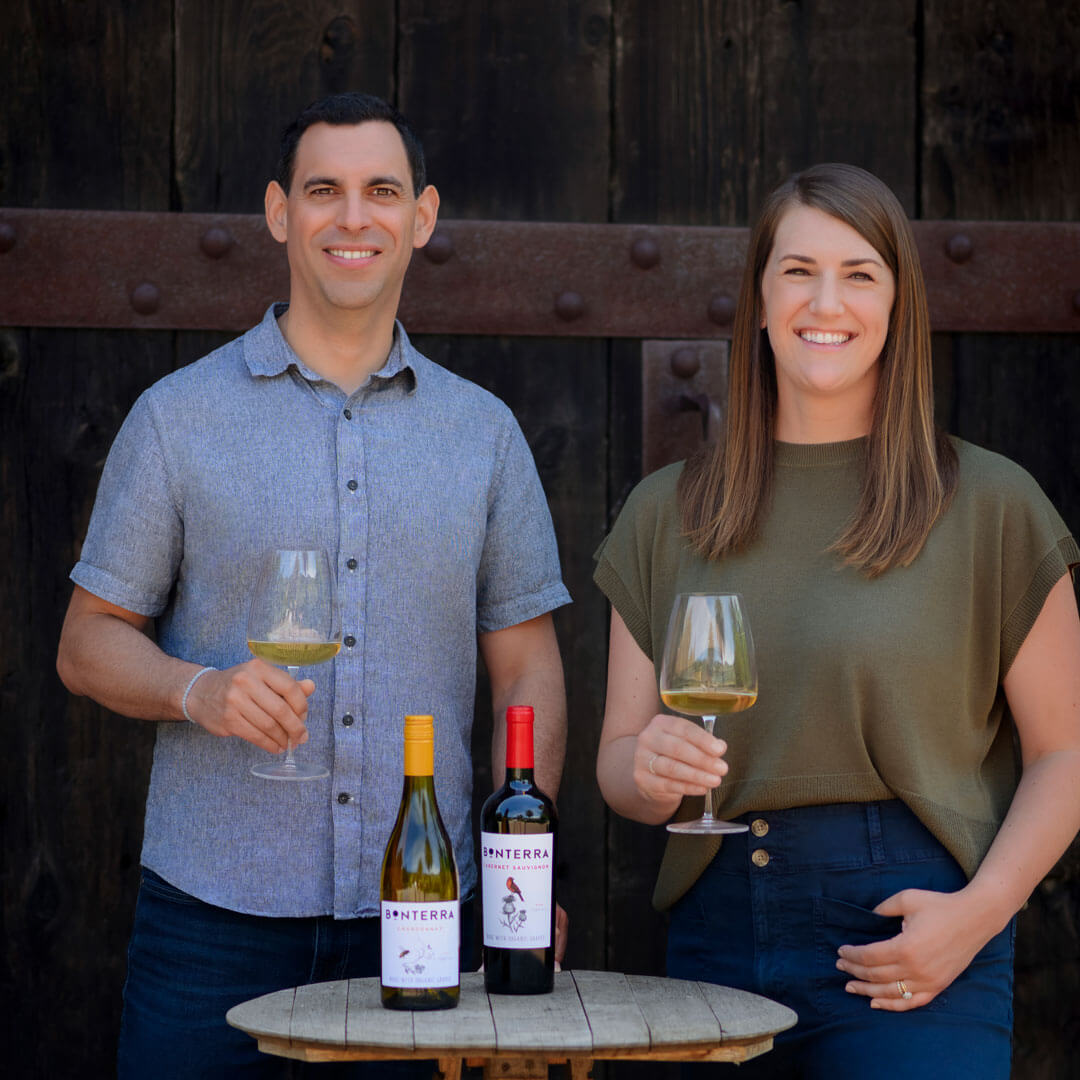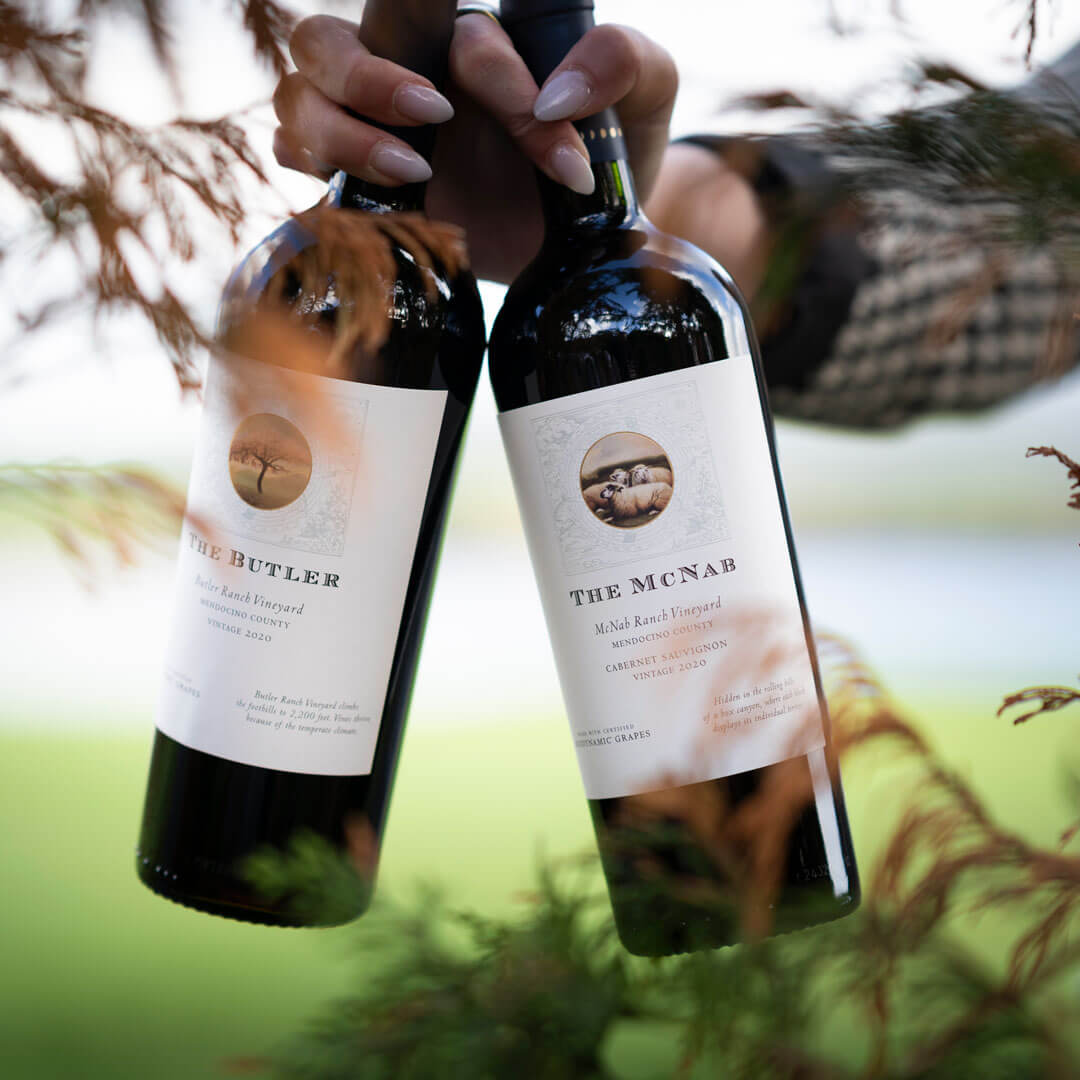The phrase “dry wine” sounds like a contradiction in terms, so it’s not surprising that dryness is one of the most confusing concepts among new wine drinkers. In this post, we’re going to spell out what dry actually means in the context of red wine.
In a nutshell: A “dry” wine is the opposite of a sweet red wine. All wines fall somewhere on the dry/sweet spectrum, and most red wines today are made into dry styles. Popular red varieties like Cabernet Sauvignon, Merlot, Pinot Noir, Syrah/Shiraz, and Malbec are almost always made into dry wines, but some wineries do make off dry (meaning, slightly higher sweetness level) reds or rosés from these grapes.
What Makes a Wine Dry?
Winemaking decisions determine whether a wine will be dry or sweet. When grapes come into a winery, yeasts begin transforming the natural sugars in the grape juice into alcohol and carbon dioxide. When the natural sugars have fermented away, we say the wine is dry. There is no (or almost no) residual sugar left.
Sometimes, though, winemakers stop the fermentation process before the yeasts have eaten up all the sugar. The residual sugar (“RS”) that remains is expressed as grams per liter – how many grams of sugar per liter of finished wine – and this is the technical measure used to indicate how dry or sweet a wine is. The higher the grams per liter, the sweeter the wine. The lower the RS number, the dryer it is. Wines with less than 10 grams of RS per liter are considered dry. Wines that are noticeably sweet generally have 30 grams per liter or more, and some of the world’s most famous dessert wines have 120 grams or more per liter!
While most people find it easy to distinguish different levels of sweetness, sometimes we can be fooled. For example, wines with a lot of residual sugar and high acidity will usually taste less sweet than wines with less acidity and the same amount of RS.
Characteristics of Dry Red Wines
Although we talk about tasting flavors in red wine that remind us of sweet fruits (cherries, blackberries, plums, etc.), nearly all red wines sold today are actually dry or slightly off dry, with somewhere between 0 and 17 grams of residual sugar per liter. Different winemakers have different preferences about how much residual sugar they want. They may choose to leave a bit more RS in order to balance out wines with higher acidity, or they may just prefer a slightly sweeter style.
While they don’t have much sugar, dry red wines generally have some level of tannin in them. Tannin is a chemical compound found in grape skins, seeds and stems, as well as in oak barrels, which creates a drying sensation in the mouth. Red wines are made by fermenting grapes with the skins still present (the skins are what provide the red color), unlike white wines, and many reds also spend some time aging in oak. So red wines will almost always have more tannin than whites. The amount of tannin in a wine depends on many factors, though, including how old the wine is (tannins grow softer with time), what the growing season was like the vintage it was made, the vineyard site, how the grapes were fermented, as well as on the grape variety being used.
Popular Red Wine Types
- Cabernet Sauvignon: This world-famous grape produces full-bodied wines with fairly high acidity, powerful tannins, and typical dark fruit flavors. You may have wondered is Cabernet Sauvignon sweet, because of its popular white wine counterpart, Sauvignon Blanc. Cabernet Sauvignon is almost always made into a dry style capable of aging for years – Bonterra’s McNab Cabernet Sauvignon is a great example – though some off dry Cabs meant to be consumed very young are also available. Dry Cabernet Sauvignon is best paired with hearty, savory dishes like braised lamb shanks or rich mushroom risotto.
- Merlot: Another famous grape from Bordeaux, Merlot typically has softer tannins and more generous fruit flavors compared to Cabernet Sauvignon. It makes wonderful dry red wines on its own, and also when combined with other Bordeaux varieties, as we do in our Bonterra Red Blend. Merlot pairs well with many foods, thanks to its plush texture and approachable tannins. Veggie burgers, grilled lamb, and roast duck are all fantastic with Merlot.
- Pinot Noir: This red grape originally from northern France produces some of the world’s most expensive wines, thanks to its silky texture and intriguing aromatic complexity. Nearly all Pinot Noir wine is dry, though some exceptionally fruit-forward versions from California might edge into off-dry territory. Thanks to its soft tannins and fresh acidity, the Pinot Noir grape pairs well with many different types of foods, including seared salmon, roasted root vegetables, and lentil salads. Bonterra Pinot Noir is a classic example.
- Syrah/Shiraz: This popular red grape is known for its peppery, savory flavors and bold fruit character, which lends itself well to dry, off dry, and even sweeter dessert wine styles. Syrah is often blended with other red grapes to create beautifully complex, layered, and charismatic reds like The Butler. Dry Syrah-based wines shine with intense flavors, and since they tend to have a fair bit of tannin, they pair well with smoked red meats, BBQ, and rich wild game dishes.
- Zinfandel: This red grape is beloved for its spicy flavors and juicy fruit core. Like Syrah, it is most often used to make wonderful dry red wines, but also shines in sweet dessert wines. “White Zinfandel” (a semi sweet rosé wine made from Zinfandel, with 20-30 grams per liter of residual sugar) also took the world by storm in the 1980s, and still has a devoted following. Dry red Zinfandel, like Bonterra’s balanced example, is a wonderful pairing for dishes involving aromatic spices, like keema, chili, and cajun-rubbed fish or chicken.
How to Choose and Enjoy Dry Red Wines
What’s the best way to find your favorite dry red wine? Get out there and try some!
If you prefer your coffee or tea black, you might want to explore some of the more tannic reds like Cabernet Sauvignon, Cabernet Franc, and Syrah. If you’re very sensitive to bitter flavors, try the world of Pinot Noir, Zinfandel, or Merlots described as “smooth” or “silky.”
As you try each wine, pay attention to the aromas and flavors you notice, as well as the textures you enjoy. Make a note of which wine regions you seem to like, but don’t be afraid to explore new areas, as well. The world of wine is always growing and evolving, and different winemakers can make totally different wines from the same grapes! Wine is also vulnerable to how you take care of it. Wine storage and knowing how long red wine lasts after opening are key points to proper and optimal wine enjoyment.
Once you’ve noted a few reds that you love, use that benchmark to get suggestions for other dry red wines in the same family of experience. Don’t be afraid to ask a knowledgeable wine merchant for help picking a bottle to try. Wine apps and wine clubs can also be helpful in pointing you to new discoveries, and keeping track of your personal preferences. Consider trying red blend wines too. After all, the best red wine is always the one you like the most.
At our organic winery, we value the quality and taste of our wines. Try Bonterra wine for yourself by visiting. If you can’t make a visit, order wine online to enjoy from the comfort of your home. Cheers!




